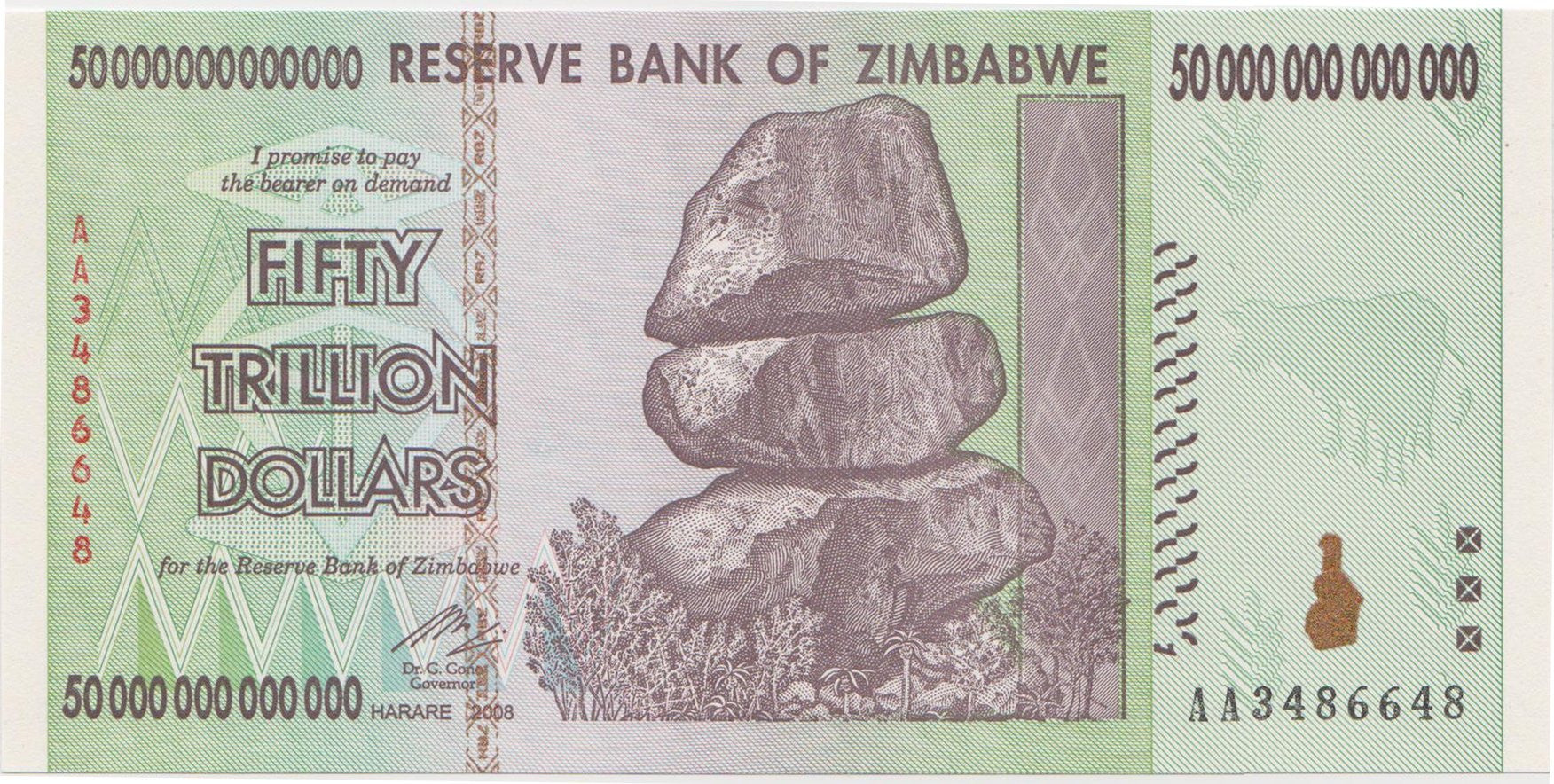
Gideon Gono signed subsequent issues of bearer cheques after his appointment in November 2003. The first RBZ bearer cheques, with face values of $5,000 and $10,000, were issued in September 2003 and carried the signature of the then Acting Governor, Charles Chikaura. Three months after the Cargill bearer cheques were introduced, primarily as payment instruments for cotton farmers, the Reserve Bank of Zimbabwe issued its own set of bearer cheques. The Cargill cheques, whose face value ranged between $5,000 and $100,000, were in circulation until October 2004. The first such bearer cheques were issued in June 2003 and were valid for six months.

The Cargill Cotton bearer cheques: (2003-2004)Īs inflation raced towards 600%, cotton company Cargill, whose supplier farmers were now burdened with huge stacks of dollars as payment, came up with “bearer cheques” issued by Standard Chartered bank with authorisation from the Reserve Bank of Zimbabwe. A different $500 note, predominantly brown, replaced the red 2001 issue in 2003, when it was issued alongside a $1,000 bill.

This was to be followed by new $5, $10 and $20 bills in 1997. The Leonard Tsimba ZWD series: (1993-2003)Īfter succeeding Moyana in 1993, Tsumba introduced a new set of notes, starting with $50 and $100 denominations, between 19. During this time, Zimbabwe’s bank note remained the same, save for the new governor’s signature and the capital city’s new name, which had changed in 1982. Moyana was appointed the first black governor of Zimbabwe’s central bank in 1983, serving until August 1993. Krogh, the last governor of the Reserve Bank of Rhodesia, who occupied that position in newly independent Zimbabwe for three years. The new republic’s first set of bank notes carried the signature of Desmond C. Here, ZimFact provides a pictorial sequence of Zimbabwe’s currency evolution since independence in 1980. Government says it will issue higher denomination notes – $10, $20 and $50 – this year in a bid to end a bank note crisis which emerged late 2015. The reintroduced Zimbabwe dollar currently has $2 coins and $5 bank notes, which a circulating alongside bond coins and notes introduced in 2016. On certain notes, the obverse also has a cow imprinted on the right side of the note with grains and a color-shifting security ink featuring the country’s official emblem, the Zimbabwe Bird.Zimbabwe ended a decade of official use of the United States dollar in most domestic transactions in June 2019, introducing a local currency abandoned in 2009 after it had been ravaged by hyperinflation. A variety of different security threads and stripes run along the left side of each banknote with the type depending on the denomination and some include the letters "RBZ", for the Reserve Bank of Zimbabwe.
ZIMBABWE BANK NOTE SERIES
Every note in this series has a watermark that displays the note’s respective denomination when held up to a light source. These rocks are said to represent the delicate balance between man and nature. On the Obverse of every 2007-2008 issue Zimbabwe Dollar are the famous Chiremba Balancing rocks from Epworth, a Harare Province. Today, Zimbabweans rely on a multi-currency economic system set in place where money (especially US dollars) from around the world has become legal tender in place of Zimbabwe currency. It was redenominated 3 times until its eventual collapse in 2009 due to hyperinflation caused by unregulated printing of money, the Land reform program, and government involvement in the Second Congo War under Mugabe. The Zimbabwe Dollar (ZWD) was established to replace Rhodesian Dollar and to signify the nation’s independence from the UK in 1980. It was redenominated 3 times until its eventual collapse in 2009 due to hyperinflation caused by unregulated printing of money, the Land reform program, and govern.


ZIMBABWE BANK NOTE SERIAL NUMBERS


 0 kommentar(er)
0 kommentar(er)
